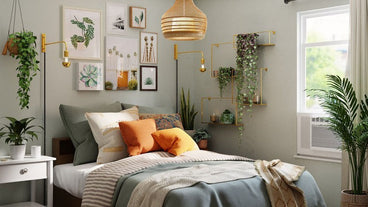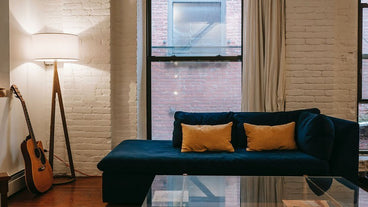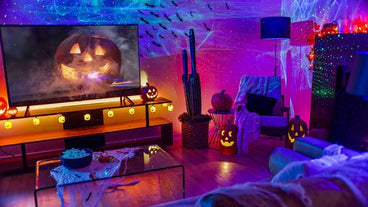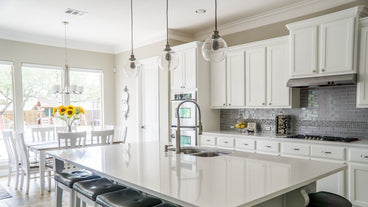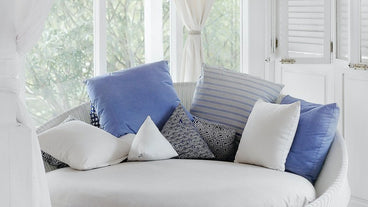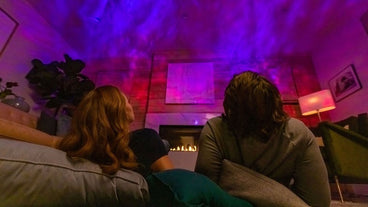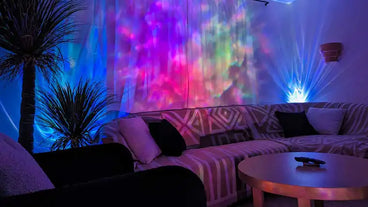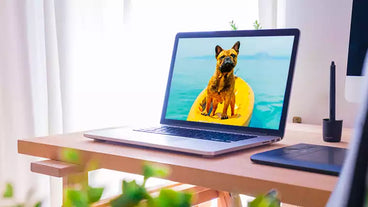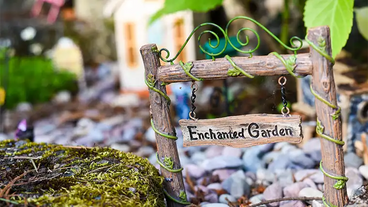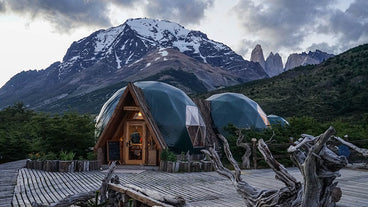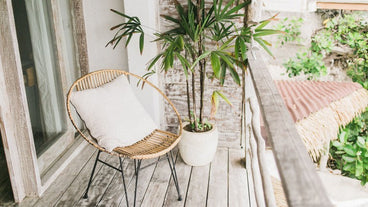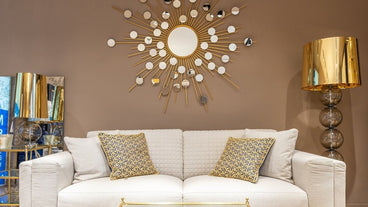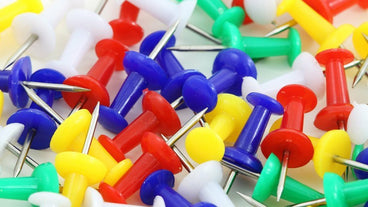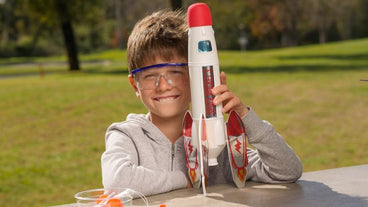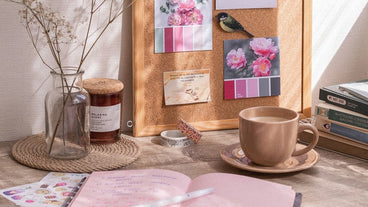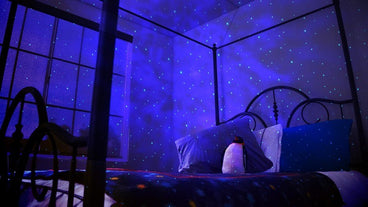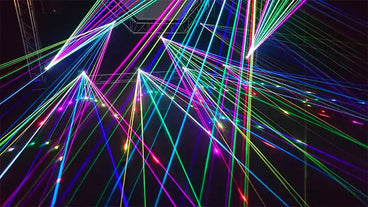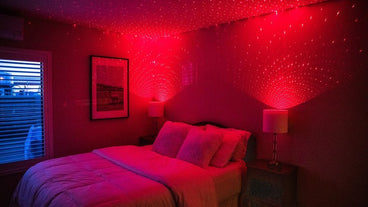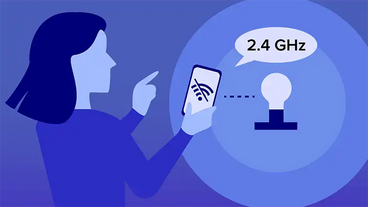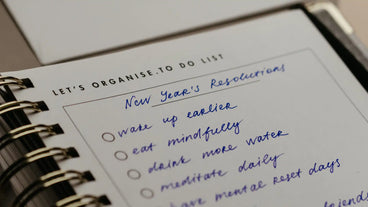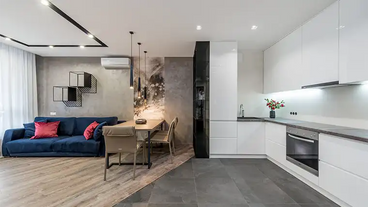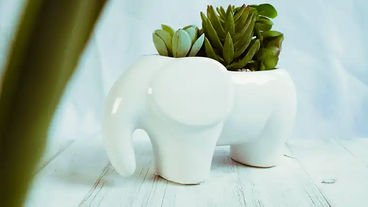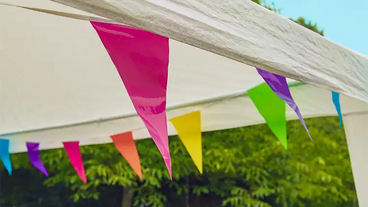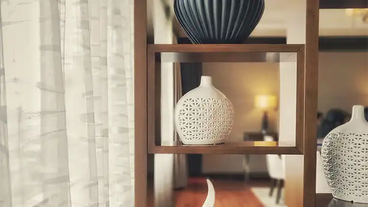A home music studio is a place to go to feel inspired to create great tunes. Yes, making sure that your recordings sound great is important, but so too is creating a transportive, transcendent space that helps you access your innermost creativity and come up with a mix that meets your wildest dreams. You can achieve this setup with the below home music studio essentials.
What to consider before buying your home music studio essentials
Getting a bunch of home music studio essentials should start with a plan for your space. Before searching for home recording studio equipment, ask yourself the following questions:
- How seriously am I taking this? If recording music is something you do for fun instead of professionally, you don’t have to build the world’s fanciest studio. As long as your studio equipment allows you to record music that meets your standards, you’re all set. The story is different, of course, if you’re going for industry standards. In that case, you’ll need to reimagine a room in your house as a high-tech recording studio. The result can be a transformation in not just your space, but your creative process.
- How much money do I have? In a professional recording studio, most pieces of equipment are quite expensive. If you’re working on a small budget, you might not be able to afford all this high-quality technology. In that case, a small setup next to your recording studio computer works great – there’s a reason bedroom pop is so popular!
- Where in my home will my studio be? Try to avoid small or square rooms for your home studio, as these sizes and shapes result in poor recording quality. Home studios full of reflective or hard surfaces and carpeted floors can also prove problematic. If your home doesn’t quite have recording-appropriate spaces, acoustic treatments can help solve the problem. More on those in the list below.
12 home music studio essentials
The most important things to add to your home music studio are the following:
1. Laptop or computer
If you’re keeping things modest and low-budget in your recording studio, you can probably get away with a laptop. For multi-channel, larger recording projects, a desktop computer with at least 16GB of RAM is best. Desktops are also better if you’re more interested in music production than creating and recording your own music. The better performance power of desktop computers is more appropriate for uncovering the wow and wonder hidden under someone else’s demo.

2. Digital audio workstation and audio interface
You’re probably aware that Pro Tools is the modern standard for music recording. You might not be aware that this interface is called a digital audio workstation (DAW). This name comes from how software platforms like Pro Tools resemble classic mixing board hardware.
DAWs are incomplete without hardware known as audio interfaces, which include preamps, direct input boxes, headphone amps, and more. Many lower-price audio interfaces combine several of these functions, but in professional spaces, each audio interface is a standalone item.
Similarly, if you’re on a budget, you can ditch Pro Tools in favor of less expensive DAWs, though Pro Tools remains the industry standard. Ultimately, how you make yourself comfortable and awaken your creativity in your recording space is up to you.

3. Studio monitors
Unlike regular speakers, studio monitors don’t accentuate certain frequencies in a recording’s mix. This distinction means that studio monitors give you a far more accurate sense of your mix than standard speakers. With this unaltered mix, you’ll know which channels you need to turn up or down to get your music where it needs to be. The result is a recording studio where you can truly transform your music – and the minds of your listeners.

4. Microphones and mic stands
Microphones speak for themselves – well, to some extent. You obviously need a mic for your vocals, but theoretically, every instrument in your studio should get its own mic. This mic should be engineered for use with that instrument. Don’t use a drum mic on a guitar or a guitar mic on your drums.
You’ll also need mic stands to support your mics as you move them where they should go for optimal recording. To start, you’ll only need one or two mic stands. Yes, professional studios often have several more, but since mic stands don’t record or alter sound, you don’t need many at first. Holding back on mic stands certainly gives you more money to invest in other ways of shifting your musical perspective in the studio.

5. Headphones
Headphones are vital to accurately monitoring your music as you record it. Closed-back headphones are often best in studios, as their structure prevents the sounds in your headphones from bleeding out into mics.
Notably, headphones are not recommended for use in mixing. Experts say that their closeness to your ears can lead you to create a mix that sounds unnatural as opposed to an open environment. Use them solely as you record, not after.

6. Cables
A recording studio can’t function if its many devices aren’t connected to one another. That’s where cables come in. Monitors, microphones, and audio interfaces all require special cables such as XLRs and quarter-inch cables to connect to your DAW. Without these cables, you can’t create music that truly shifts the perspective of anyone who hears it. And even if you’re doing this all just for fun, you at least want what you create to reorient your mind.

7. Pop filters
Pop filters are studio essentials that eliminate popping sounds that are inevitable with vocal recording. These sounds come from the air we expel when we pronounce certain words, and pop filters prevent this air from hitting the mic. The result is a pop-free listening experience, even if you’ve recorded a pop song that makes listeners hear their world in a whole new way.

8. Ear training software
Properly mixing your music can be among the most challenging aspects of recording. Ear training software can help you solve this problem. With this software, you can learn to detect when a sound has been modified in a certain way. You can bring this knowledge with you to your next mixing session to achieve a clearer, more exciting mix. With this software, hearing your mixes means believing in them.

9. Studio workstation
In addition to all the music equipment above, you’ll also want a comfortable workstation – a desk and a chair – for lengthy recording and editing sessions. Chances are you can probably repurpose a desk or table you already own. However, buying a chair engineered for long periods of sitting is highly recommended. Computer or gaming chairs should do the trick. Sit down and get ready for a new perspective when you hit “record.”

10. Acoustic treatments
As mentioned earlier, acoustic treatments can largely solve the problems that come with small, square, carpeted home recording studios. Acoustic panels are perhaps the most common of these treatments, and they excellently absorb high-frequency sounds and quell standing waves. The latter type of wave is notorious for causing sound reflections that result in poor recording quality. Speaking of reflection...

11. Reflection filters
Reflection filters make great supplements for acoustic treatments (and they’re reasonable substitutes if you’re on a low budget). These filters, which are most effective for vocal recording, trap sound reflections before they enter your recording studio. In small bedroom studios, they can comprise the entirety of your acoustic treatment. There, they can mentally transport you to a professional recording studio without you moving an inch.

12. Studio lighting
As you research recording equipment, it can be easy to forget one of the basics of any room where you need to see what you’re doing: lighting. Proper illumination is key to hitting the right piano keys or seeing your keyboard as you work with your DAW. It can also recast your space in a whole new light, one with profound mood effects that can alter your creativity.

In recording studios, two types of lighting often prove popular:
- LED lights. Whether as strip lights, color-changing lights, or basic white bulbs, LED lights are popular in recording studios because they emit little heat. The result is that they don’t lead to the bane of every musician’s existence: sweaty performances. It’s easy to overlook how much sweat you work up belting high notes, shredding guitar solos, or pounding the drums, but this problem disappears under LED lights.
- Laser lights. Like LED lights, laser lights emit very little heat. However, their lighting is brighter and more focused than LED lights. And newer laser projectors such as the Sky Lite Evolve come with smart lighting and multi-color capabilities for which LEDs have long been loved. The Sky Lite Evolve transforms your space – and your mind – with stars, nebulas, and other customizable, multi-color interplanetary sights. Recording under this astonishing indoor sky is sure to inspire you and elevate your musical experience.
As recording studio laser lighting goes, take some inspiration from pop mega-star Doja Cat. At Doja’s launch party for her newest studio album Planet Her, she used a Sky Lite Evolve to bring her “planet” to the whole audience. Doja’s lighting experience transformed an ordinary event space into an immersive world all her own, and in this new light, she completely transported her guests into her world.

Sky Lite Evolve: Smart Galaxy Projector
$49.99$39.99
The latest evolution in smart galaxy lighting.
BlissLights are home music studio essentials
With the right home studio equipment, you can record your music exactly how you want and access all the artistic inspiration you need. BlissLights are especially powerful at providing this creative spark. Under their starry-sky views, seeing is believing – in the great beyond, in your music, you name it. Browse the BlissLights indoor collection to find the perfect home music studio lighting and get one step closer to a big creative breakthrough.You may also enjoy these...
Discover fun and unique lighting ideas on the BlissLights Lighting Blog!




